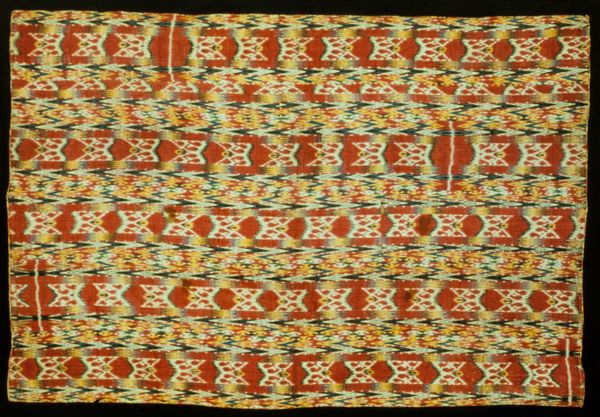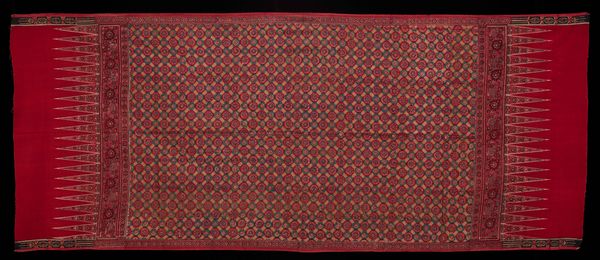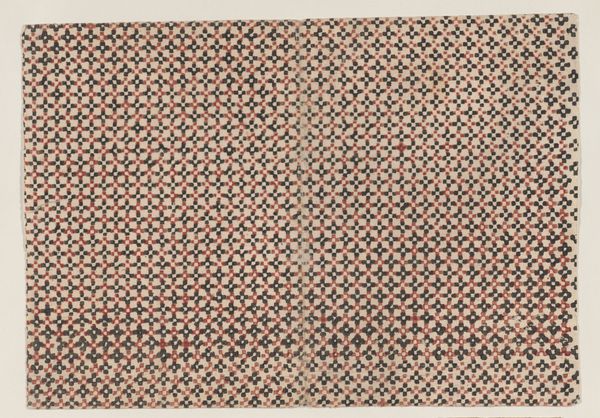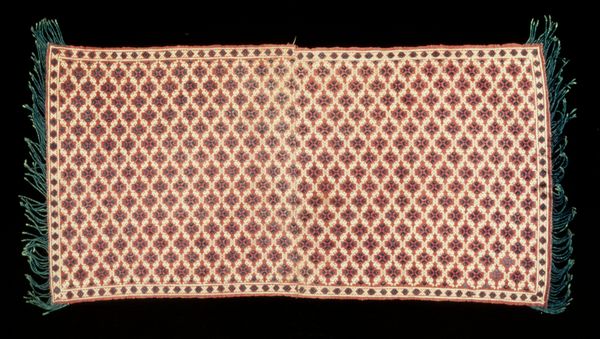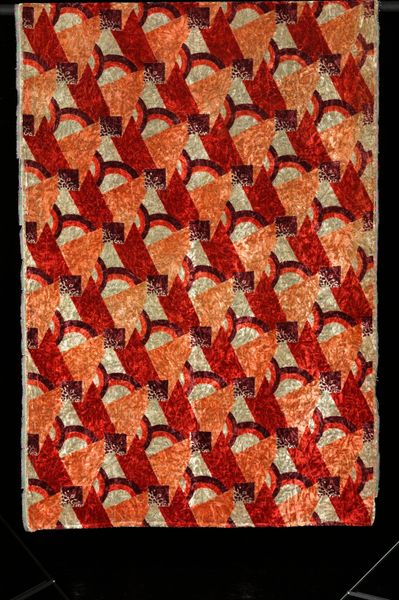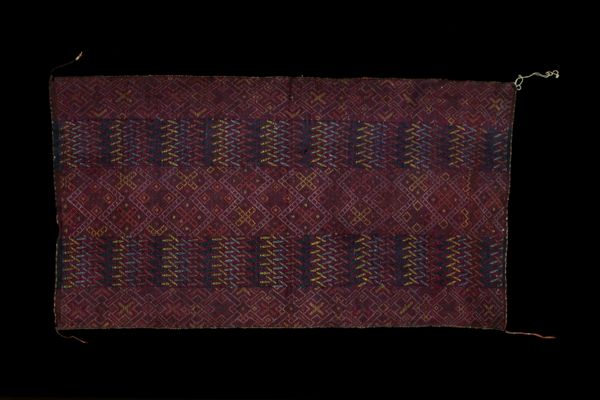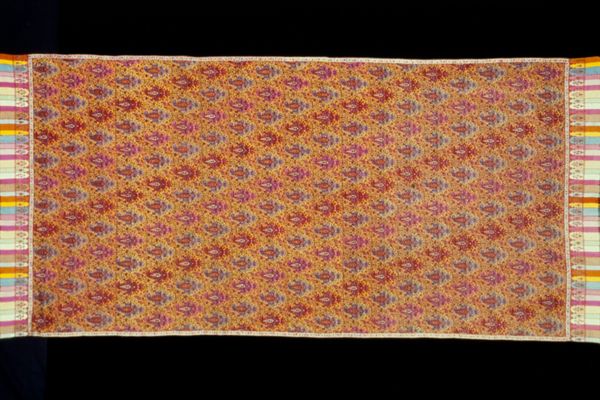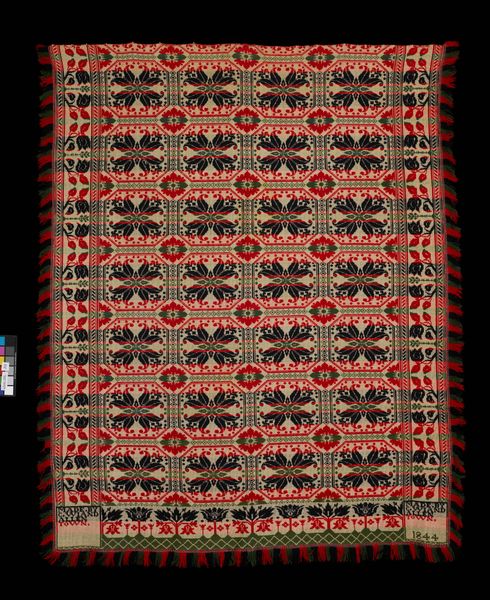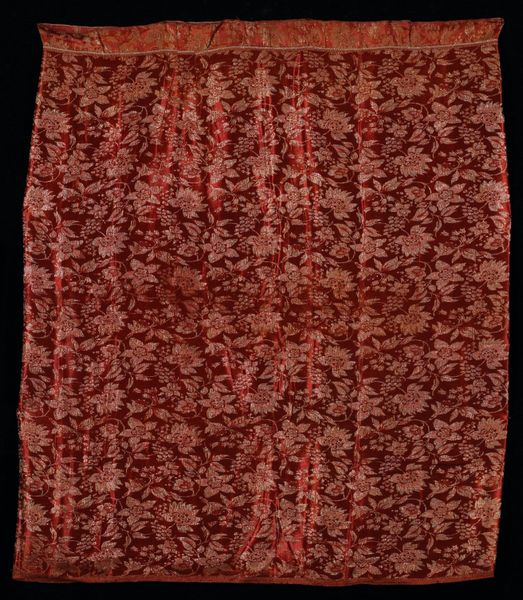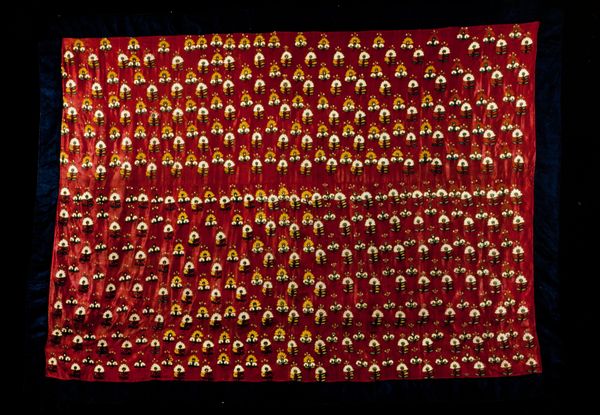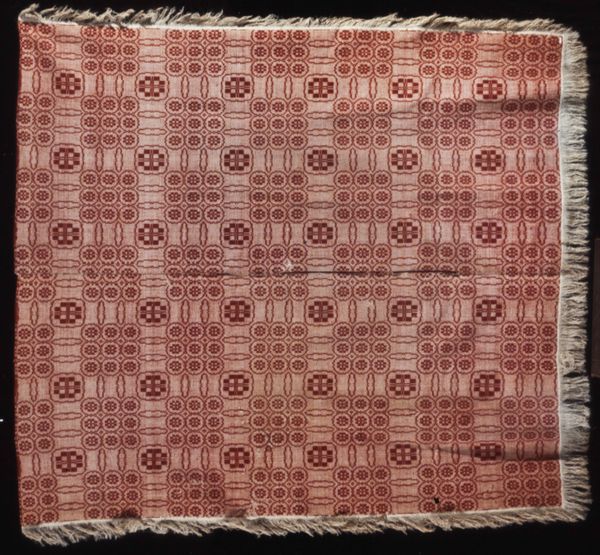
silk, weaving, textile
#
tribal design
#
natural stone pattern
#
silk
#
weaving
#
textile
#
geometric pattern
#
hand-embroidered
#
organic pattern
#
fabric design
#
repetition of pattern
#
pattern repetition
#
islamic-art
#
decorative-art
#
imprinted textile
#
layered pattern
Dimensions: 55 3/4 x 80 3/8in. (141.6 x 204.2cm)
Copyright: Public Domain
This doshalla, or shawl, was likely made in Kashmir from goat fleece, though its exact date is unknown. The proliferation of these shawls in the West, particularly in the 18th and 19th centuries, reveals much about trade, colonialism, and the exoticization of Eastern cultures. The repeated boteh, or paisley, pattern is no accident. It speaks to the industrialization of textile production. Originally woven by hand with painstaking detail, shawls like this were status symbols for wealthy Europeans. The pattern evokes a sense of luxury and artistry, but its mass production and widespread distribution also speak to the changing landscape of global commerce. This trade was facilitated by the British East India Company. To understand this shawl, one must consider not only its aesthetic qualities but also the social and economic systems that brought it into being. Examining trade records, colonial archives, and museum collections can shed light on its complex history. Art becomes contingent on social and institutional contexts.
Comments
No comments
Be the first to comment and join the conversation on the ultimate creative platform.
